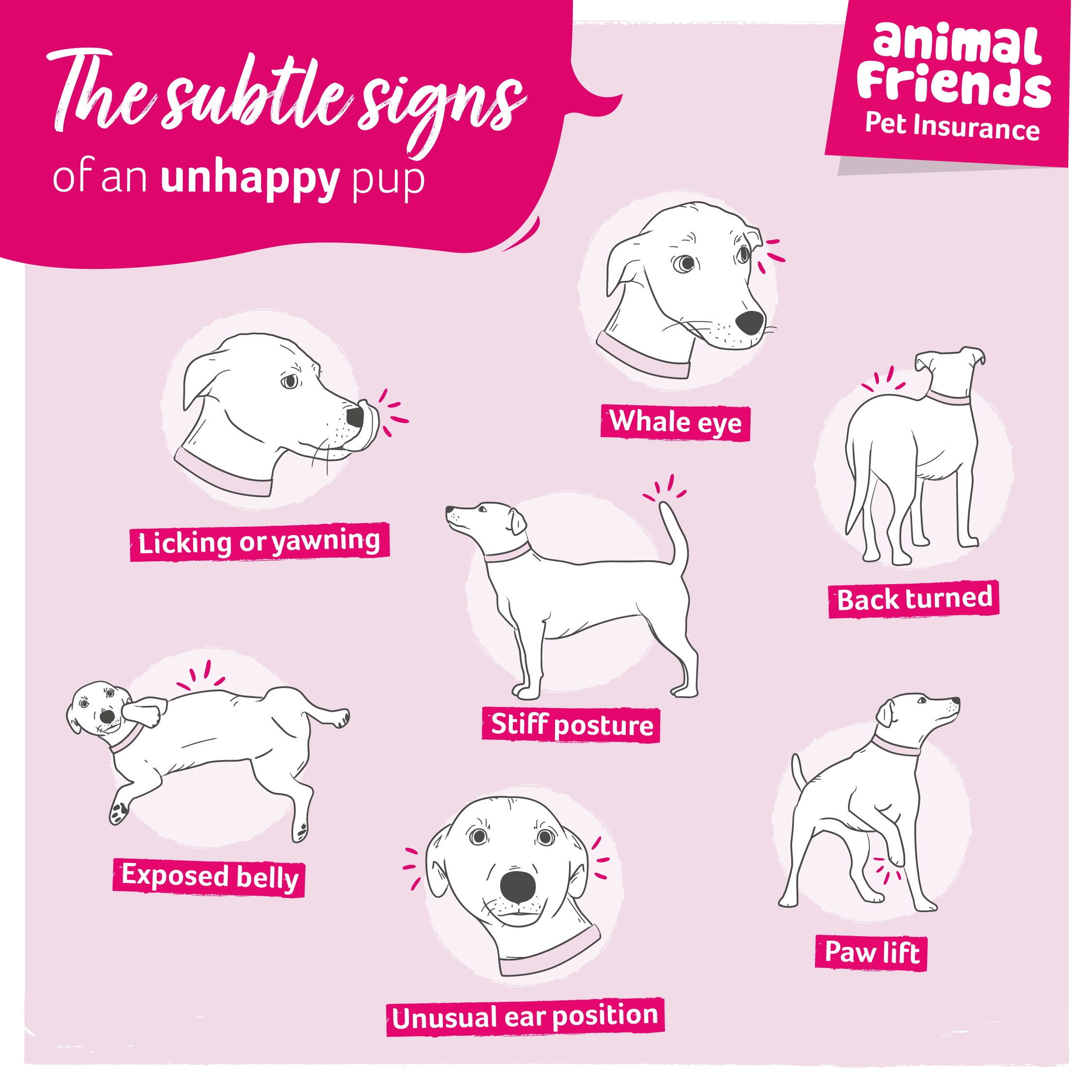31st May 2023
As humans we tend to know the little things to look out for if our friends or family are having a bad day. But, as much as we would love it if they could, our dogs can’t explain their emotions or wellbeing through words, so it can be helpful to look out for signals in their body language that can indicate how they are feeling.
Dogs have unique ways of showing us that they are feeling distressed or upset, and while the extreme signs such as a growl or a snap is a sure-fire way to tell that something is off, there are many smaller, more common, tell-tale signs something might be worrying your pet.
How dogs can have different signs of stress
It is important that we get to know our dogs and how they show their signs of stress or fear, as it can look different for every dog. Our furry friends tend to communicate best through their bodies with various subtle signs. Your dog will usually work their way through each signal, or body language sign, until they feel understood, starting from calm and leading all the way up to aggressive if they feel their early signs are ignored.
This process is often called the ‘ladder of aggression’ - although we prefer 'ladder of communication' because understanding your dog is about more than just those challenging behaviours. These signs include:
- Nose licking or yawning
- Avoiding gaze or turning their head
- Lifting one of their front paws
- Turning away entirely
- Crouching, tail or ears pinned down or in an unusual position
- Lying down or showing their belly
- Stiffening
- Growling or baring teeth
- Snapping
- Biting

Understanding a dog’s body language
As loving and responsible owners, we all want the best for our dogs, so it’s important to understand the different ways and stages of communication. The key thing to know is that if our pooches ever feel scared or threatened, they will try to use the ‘three F’s’ - Flight, Freeze or Fight.
Their first instinct is to try and run, but this isn’t always possible; they may be in a closed off room or on their lead for example. In this case, they will likely show a smaller suggestion of this sign, perhaps by turning their head. If we, as humans, don’t recognise this, they are more likely to move on to freeze before they feel the need to fight.
Within this ‘freeze’ stage, they will display most of the communication signs that show they are uncomfortable, signalling they want the situation to change. The good news is that if your dog feels they have been understood by their human when they show the first, more subtle sign (such as nose licking or crouching), it is more likely that they will continue using this early sign to alert their owner to how they feel or the help they need. Thinking of it as their way of training us. We can show our dog we are listening to them by either calmly taking them away from the situation, removing the object that’s causing them distress, or putting a physical barrier between your dog and the object.
If a dog learns that they aren’t listened to on the first sign however, they will begin to skip steps on the ladder and jump to the more ‘aggressive’ behaviours, like growling or baring their teeth. These behaviours are extreme but can be dangerous. BUT, by recognising your dog’s body language, you can build a greater, more positive bond with your pooch and help keep them happy and healthy.
More on our dog blog
Read more news articles, opinion pieces, reviews and personal stories behind our dogs on our blog.
Need dog insurance?
Dog insurance can help cover the cost of veterinary treatment if your dog gets injured or falls ill.
